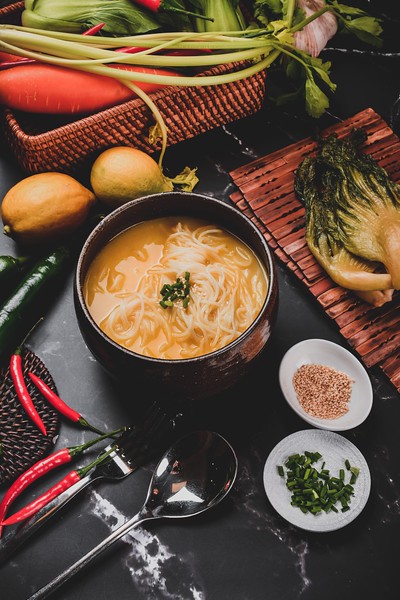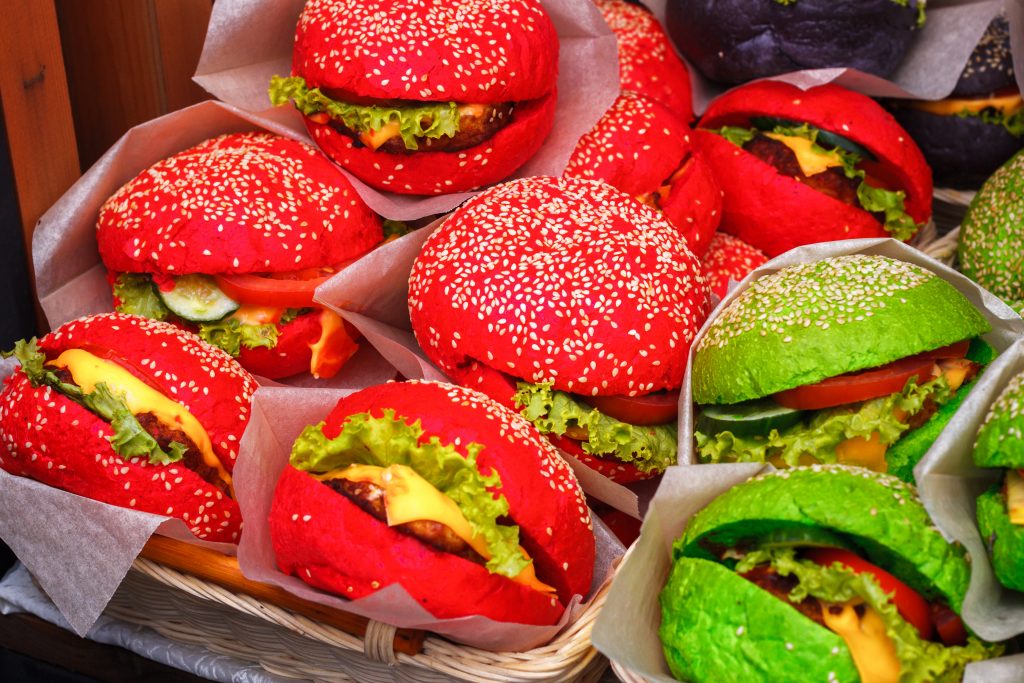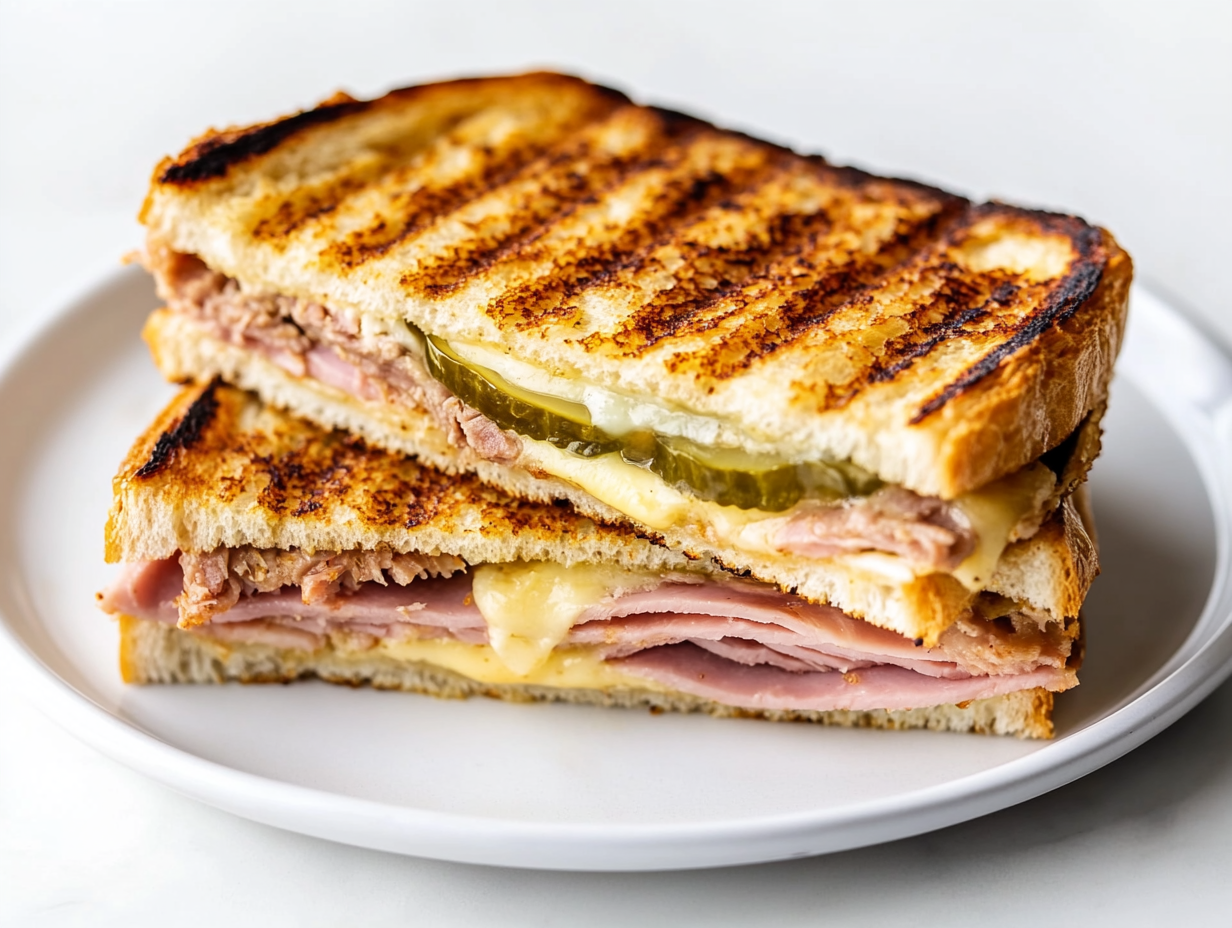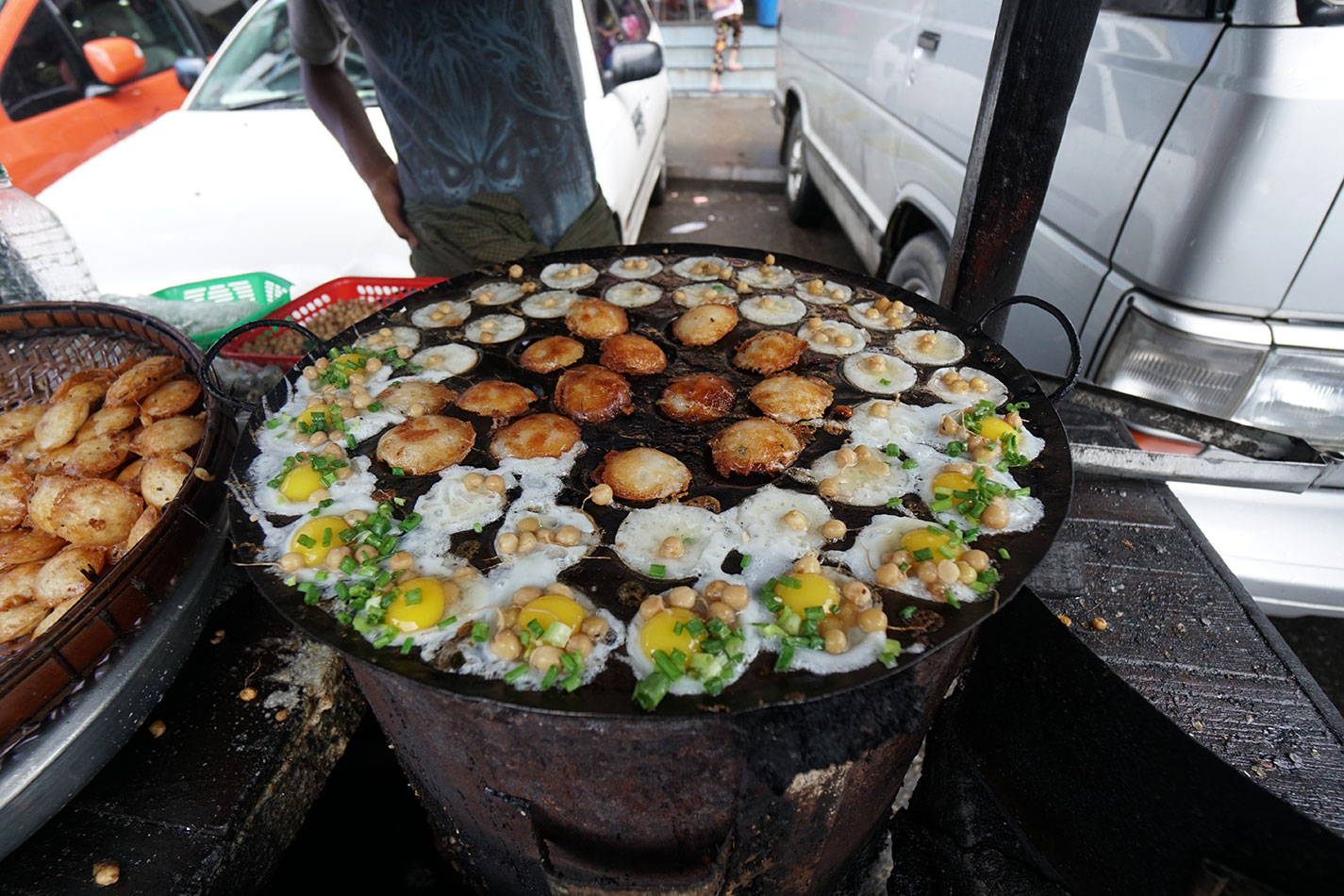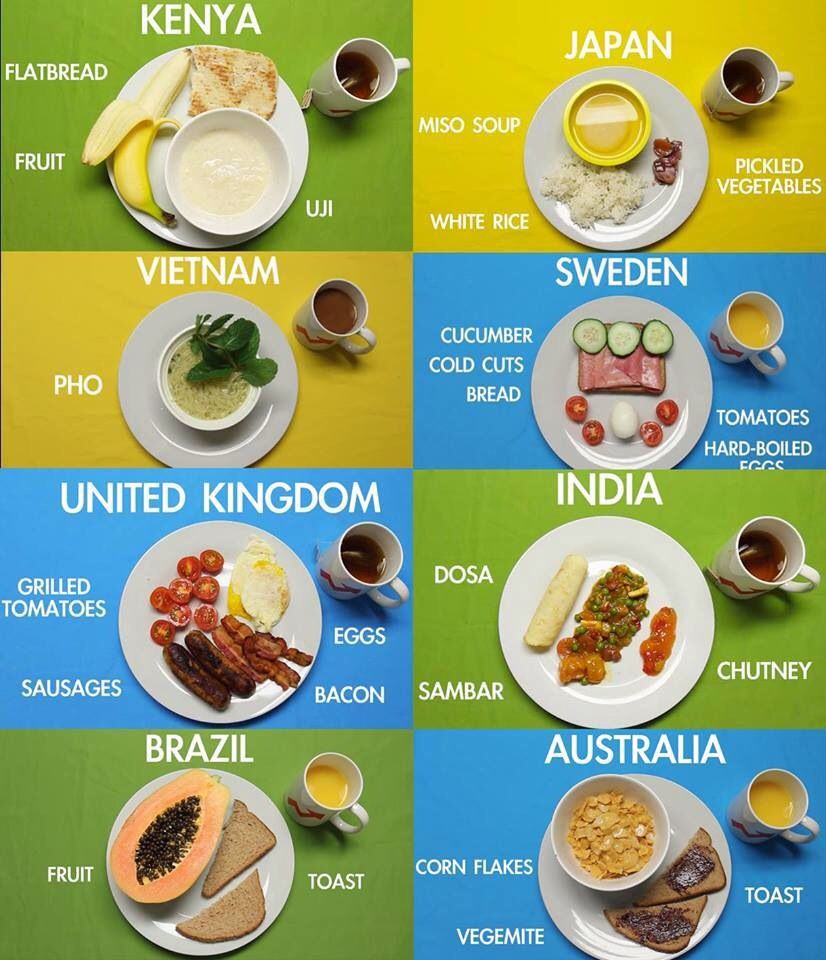
Breakfast Around the World: A Culinary Journey to Start Your Day
Breakfast, the most important meal of the day, takes on a fascinating array of forms across the globe. Far from the ubiquitous cereal or toast, the world’s breakfast tables are laden with everything from spicy stews and savory pastries to fermented delicacies and vibrant fruits. This guide is your passport to a culinary adventure, exploring the diverse and delicious breakfasts enjoyed in different corners of the world. Get ready to expand your breakfast horizons and discover new flavors that might just become your new morning staples!
Part 1: The European Breakfast Landscape
Europe offers a spectrum of breakfast styles, ranging from simple and quick to elaborate and indulgent.
-
England: The Full English Breakfast (or Fry-Up)
The undisputed king of British breakfasts, the Full English is a hearty and substantial meal designed to fuel a long day. It typically consists of:
- Bacon: Streaky bacon, fried until crispy.
- Sausage: Pork sausages, often seasoned with herbs and spices.
- Eggs: Fried, scrambled, or poached, depending on preference.
- Baked Beans: Haricot beans in a tomato sauce, a crucial component.
- Tomatoes: Grilled or fried.
- Mushrooms: Fried or sautéed.
- Black Pudding: A type of blood sausage, considered a delicacy by some.
- Toast: Served with butter and jam or marmalade.
How to make a Full English Breakfast:
- Prep your ingredients: Gather all your ingredients and have them ready to go.
- Cook the bacon: Fry the bacon in a large pan until crispy. Remove and set aside.
- Cook the sausages: Cook the sausages in the same pan, turning occasionally until browned and cooked through. Remove and set aside.
- Cook the eggs: Fry, scramble, or poach the eggs to your liking.
- Cook the tomatoes and mushrooms: Grill or fry the tomatoes and mushrooms until softened.
- Heat the baked beans: Heat the baked beans in a saucepan or microwave.
- Toast the bread: Toast the bread to your desired level of brownness.
- Assemble the breakfast: Arrange all the components on a plate and serve with toast and your choice of condiments.
-
France: Croissant and Café au Lait
French breakfasts are known for their simplicity and elegance. The cornerstone of a typical French breakfast is the croissant, a buttery and flaky pastry, often enjoyed with:
- Café au Lait: Coffee with milk, typically served in a large bowl.
- Tartine: A slice of baguette or bread topped with butter and jam.
- Pain au Chocolat: A chocolate-filled croissant.
How to enjoy a French breakfast:
- Visit a boulangerie: Start by visiting a local bakery to purchase fresh croissants and pain au chocolat.
- Brew your coffee: Prepare a strong cup of coffee and mix it with warm milk to create café au lait.
- Assemble your tartine: Spread butter and jam on a slice of baguette.
- Savor the flavors: Enjoy your breakfast slowly, appreciating the buttery pastry and the rich coffee.
-
Germany: Brötchen and Aufschnitt
German breakfasts are often savory and substantial, featuring an array of cold cuts, cheeses, and bread rolls.
- Brötchen: Small, crusty bread rolls.
- Aufschnitt: A variety of cold cuts, such as ham, salami, and liverwurst.
- Käse: Cheese, typically sliced or in block form.
- Eier: Eggs, usually boiled or scrambled.
- Marmalade or Honig: Jam or honey.
- Kaffee: Coffee.
How to enjoy a German breakfast:
- Gather your ingredients: Purchase fresh brötchen, a selection of aufschnitt, cheese, eggs, and condiments.
- Prepare your toppings: Slice the aufschnitt and cheese, and boil or scramble the eggs.
- Assemble your Brötchen: Slice the brötchen in half and top with your choice of aufschnitt, cheese, and eggs.
- Enjoy with coffee: Serve with a cup of strong coffee.
-
Spain: Tostada con Tomate y Café con Leche
Spanish breakfasts are often simple and quick, centered around bread, tomato, and olive oil.
- Tostada con Tomate: Toasted bread rubbed with garlic and topped with grated tomato and olive oil.
- Café con Leche: Coffee with milk, similar to café au lait.
- Churros: Fried dough pastries, often served with chocolate for dipping (more of a treat than a typical breakfast).
How to make Tostada con Tomate:
- Toast the bread: Toast slices of bread until golden brown.
- Rub with garlic: Rub the toasted bread with a clove of garlic.
- Grate the tomato: Grate a ripe tomato over the bread.
- Drizzle with olive oil: Drizzle with high-quality olive oil and sprinkle with salt.
- Serve with café con leche: Enjoy with a cup of café con leche.
-
Italy: Cappuccino and Cornetto
Italian breakfasts are usually quick and simple, focusing on coffee and a sweet pastry.
- Cappuccino: Espresso with steamed milk and foamed milk.
- Cornetto: A croissant-like pastry, often filled with cream, jam, or chocolate.
- Biscotti: Almond biscuits, sometimes dipped in coffee.
How to enjoy an Italian breakfast:
- Order a cappuccino: Visit a local bar and order a cappuccino.
- Choose a cornetto: Select a cornetto from the display case, choosing your preferred filling.
- Enjoy standing at the bar: Italians typically enjoy their breakfast standing at the bar, chatting with friends or reading the newspaper.
Part 2: Breakfasts in the Americas
From hearty pancakes to spicy eggs, the Americas offer a diverse range of breakfast options.
-
United States: Pancakes, Bacon, and Eggs
The classic American breakfast is a combination of sweet and savory flavors, often featuring:
- Pancakes: Fluffy pancakes, typically served with syrup and butter.
- Bacon: Streaky bacon, fried until crispy.
- Eggs: Scrambled, fried, or poached.
- Sausage: Pork or turkey sausage.
- Hash Browns: Shredded potatoes, fried until golden brown.
How to make American Pancakes:
- Combine dry ingredients: In a bowl, whisk together flour, sugar, baking powder, and salt.
- Combine wet ingredients: In a separate bowl, whisk together milk, egg, and melted butter.
- Combine wet and dry ingredients: Gradually add the wet ingredients to the dry ingredients, whisking until just combined. Be careful not to overmix.
- Cook the pancakes: Heat a lightly oiled griddle or frying pan over medium heat. Pour ¼ cup of batter onto the griddle for each pancake.
- Flip and cook: Cook for 2-3 minutes per side, or until golden brown and cooked through.
- Serve with toppings: Serve with syrup, butter, fruit, or other desired toppings.
-
Mexico: Huevos Rancheros
Mexican breakfasts are often spicy and flavorful, featuring eggs, tortillas, and salsa.
- Huevos Rancheros: Fried eggs served on tortillas, topped with salsa ranchera (a tomato-based sauce), cheese, and beans.
- Chilaquiles: Tortilla chips simmered in salsa, topped with cheese, crema (Mexican sour cream), and onions.
- Café de Olla: Coffee brewed with cinnamon and piloncillo (unrefined cane sugar).
How to make Huevos Rancheros:
- Prepare the salsa ranchera: Sauté onions, garlic, and chilies in a pan. Add diced tomatoes, tomato paste, and spices. Simmer until thickened.
- Fry the eggs: Fry eggs to your liking.
- Warm the tortillas: Warm tortillas in a pan or microwave.
- Assemble the huevos rancheros: Place a tortilla on a plate, top with beans, salsa ranchera, and a fried egg. Garnish with cheese, cilantro, and avocado.
-
Colombia: Arepa con Huevo
Colombian breakfasts often feature arepas, a type of corn cake.
- Arepa con Huevo: An arepa filled with a fried egg.
- Calentado: A mixture of leftover rice, beans, and meat, often served with a fried egg.
- Chocolate Santafereño: Hot chocolate served with cheese, which is dipped into the chocolate.
How to make Arepa con Huevo:
- Make the arepas: Mix arepa flour (masa harina) with water and salt. Knead until a smooth dough forms.
- Form the arepas: Form the dough into small, flat cakes.
- Fry the arepas: Fry the arepas in a pan until golden brown.
- Make a slit: Cut a slit into the side of each arepa.
- Insert the egg: Carefully insert a raw egg into each arepa.
- Fry again: Fry the arepas again until the egg is cooked through.
Part 3: Asian Breakfast Delights
Asia boasts a stunning array of breakfast options, from savory noodles to fermented dishes.
-
Japan: Miso Soup, Rice, and Grilled Fish
Japanese breakfasts are typically savory and balanced, consisting of:
- Miso Soup: A fermented soybean paste soup.
- Rice: Steamed white rice.
- Grilled Fish: Salmon or mackerel.
- Tsukemono: Pickled vegetables.
- Nori: Dried seaweed.
- Tamagoyaki: Rolled omelet.
How to prepare a simple Japanese breakfast:
- Cook the rice: Cook white rice in a rice cooker or pot.
- Make miso soup: Dissolve miso paste in hot water with dashi (fish broth). Add tofu and seaweed.
- Grill the fish: Grill salmon or mackerel until cooked through.
- Assemble the breakfast: Serve rice, miso soup, grilled fish, tsukemono, nori, and tamagoyaki on a tray.
-
China: Congee and Dim Sum
Chinese breakfasts vary greatly depending on the region, but common options include:
- Congee: Rice porridge, often served with savory toppings like pickled vegetables, meat, and eggs.
- Dim Sum: Small, steamed or fried dumplings and buns, often enjoyed with tea.
- You Tiao: Fried dough sticks, often dipped in soy milk.
How to make Congee:
- Rinse the rice: Rinse rice until the water runs clear.
- Cook the rice: Combine rice and water in a pot. Bring to a boil, then reduce heat and simmer for 1-2 hours, or until the rice is broken down and the mixture is thick and creamy.
- Add toppings: Serve with savory toppings like pickled vegetables, meat, eggs, and scallions.
-
Korea: Kimchi Jjigae and Rice
Korean breakfasts are often spicy and fermented, featuring:
- Kimchi Jjigae: Kimchi stew with tofu, pork, and vegetables.
- Rice: Steamed white rice.
- Banchan: Small side dishes, such as seasoned vegetables, pickled radish, and dried seaweed.
How to make Kimchi Jjigae:
- Sauté kimchi and pork: Sauté kimchi and pork in a pot.
- Add broth and other ingredients: Add chicken or beef broth, tofu, vegetables, and gochujang (Korean chili paste).
- Simmer: Simmer until the flavors have melded.
- Serve with rice and banchan: Serve with rice and banchan.
-
India: Idli, Dosa, and Paratha
Indian breakfasts are incredibly diverse, reflecting the country’s regional variations. Common options include:
- Idli: Steamed rice cakes, often served with sambar (a lentil-based vegetable stew) and chutney (a coconut-based condiment).
- Dosa: A thin crepe made from fermented rice and lentil batter, often served with sambar and chutney.
- Paratha: Flatbread, often stuffed with potatoes, vegetables, or cheese.
How to make Idli:
- Soak rice and lentils: Soak rice and lentils overnight.
- Grind into a batter: Grind the soaked rice and lentils into a smooth batter.
- Ferment the batter: Ferment the batter overnight.
- Steam the idlis: Steam the batter in idli molds until cooked through.
- Serve with sambar and chutney: Serve with sambar and chutney.
Part 4: Beyond the Borders: Other Notable Breakfasts
-
Egypt: Ful Medames
A hearty stew of fava beans cooked with spices, lemon juice, and olive oil, often served with bread.
-
Israel: Shakshuka
Eggs poached in a spicy tomato sauce with peppers and onions, often served with bread for dipping.
-
Morocco: Harcha and Mint Tea
A semolina pancake cooked on a griddle, often served with butter, honey, or jam, and a glass of refreshing mint tea.
Conclusion: Embrace the Breakfast Adventure
This guide offers a glimpse into the fascinating world of breakfast customs across the globe. Don’t be afraid to experiment with new flavors and recipes. Exploring different breakfasts is a fantastic way to expand your culinary horizons, learn about different cultures, and add excitement to your morning routine. So, ditch the same old routine and embark on a breakfast adventure! You might just discover your new favorite meal. Good morning, and bon appétit!



